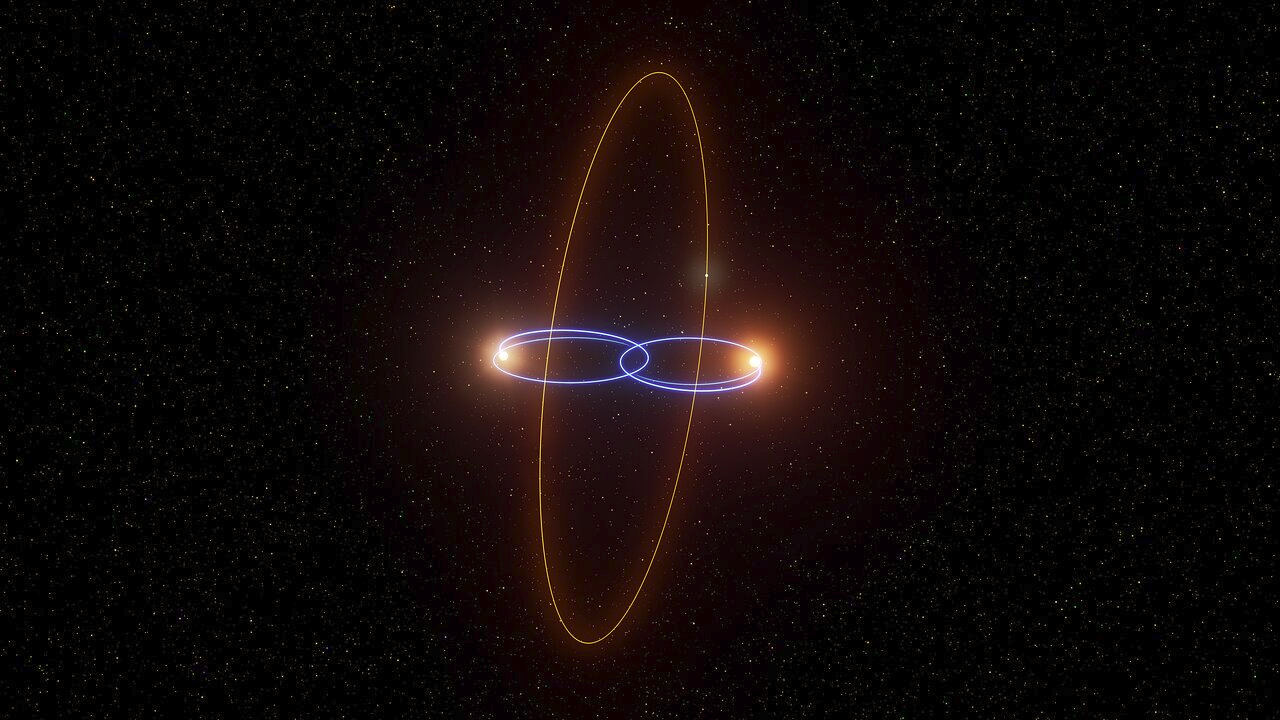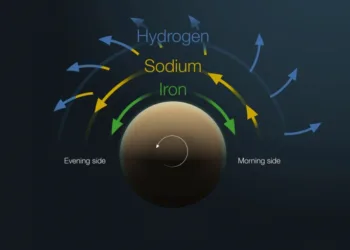Astronomers have made a fascinating discovery of a highly unconventional exoplanet that orbits its stars in a way never before observed. Designated as 2M1510 (AB) b, this planet orbits two stars—drawing comparisons to Tatooine from the Star Wars universe for its dual-star system—but with a unique twist.
Typically, planets revolving around two stars follow a straightforward pattern: the stars themselves orbit in a circular path, while the planet exists farther out in a ring formation. However, this newly identified planet does things differently; it orbits around the stars’ poles in a configuration known as a polar orbit, marking the first observation of its kind.

ESO/L. Calçada
While astronomers had theorized that such an orbit was conceivable, it had never been documented until now, with the aid of the European Southern Observatory’s Very Large Telescope (VLT). “I’m thrilled to participate in confirming evidence for this unprecedented configuration,” stated lead researcher Thomas Baycroft from the University of Birmingham, UK.
The binary stars at the center of this planetary system are classified as brown dwarfs. Often referred to as “failed stars,” these celestial bodies sit between the realms of planets and stars, being too massive to qualify as planets but not large enough to ignite fusion in their cores, adding another layer of intrigue to this discovery.
“A planet in a polar orbit around binary brown dwarfs is both astonishing and exhilarating,” commented co-author Amaury Triaud of the University of Birmingham. “This finding was unexpected, as our data collection was not aimed at uncovering such a planet or orbit.”
By analyzing the peculiar movements of the stars, which exhibited gravitational influences from the unseen planet, researchers deduced that the existence of a planet in this configuration was the only plausible explanation for the stars’ unusual behavior.
“Overall, this demonstrates the limitless possibilities in the extraordinary universe we inhabit, both for astronomers and for the greater public,” added Triaud.
The findings will be published in the journal Science Advances.


